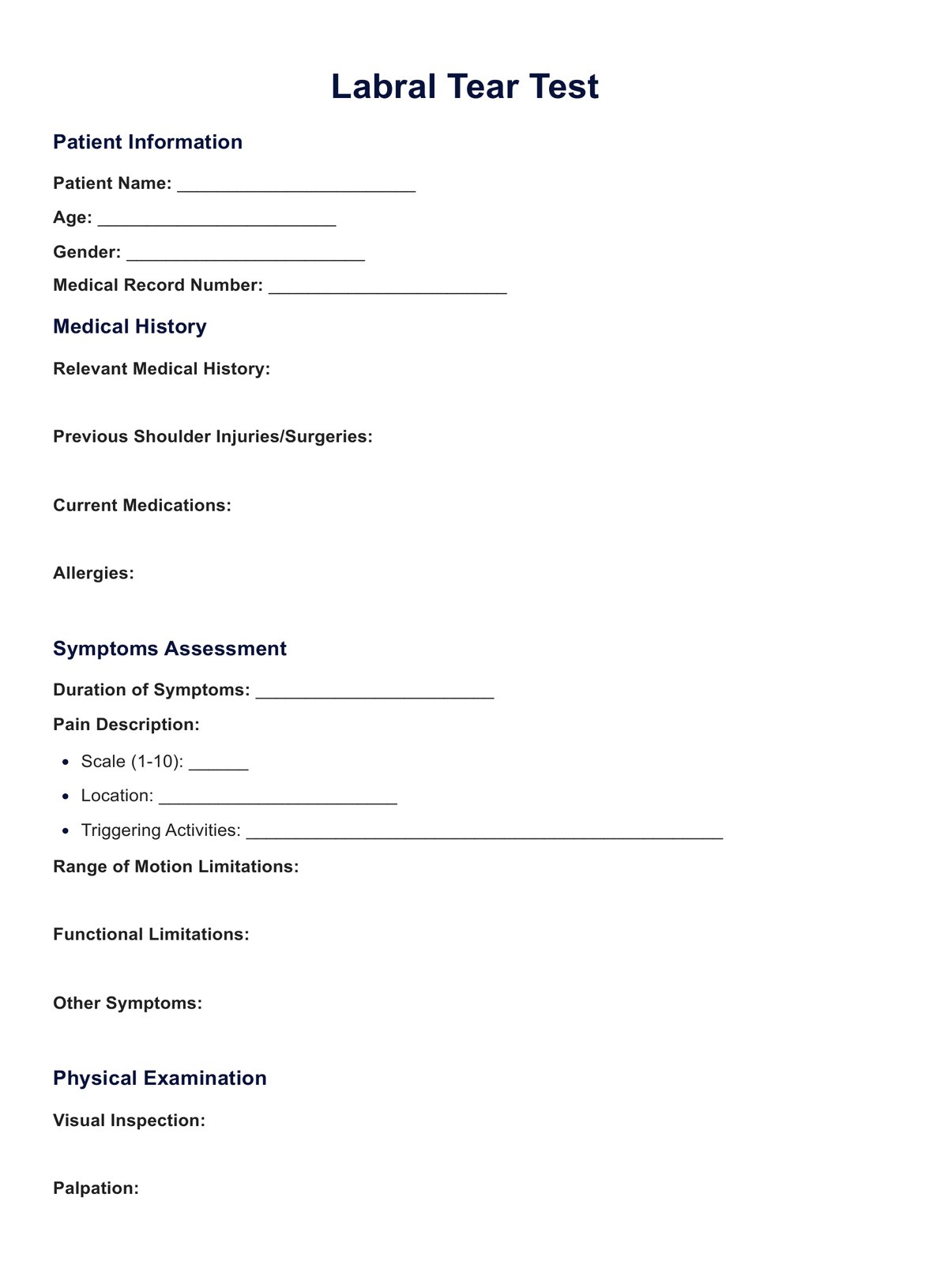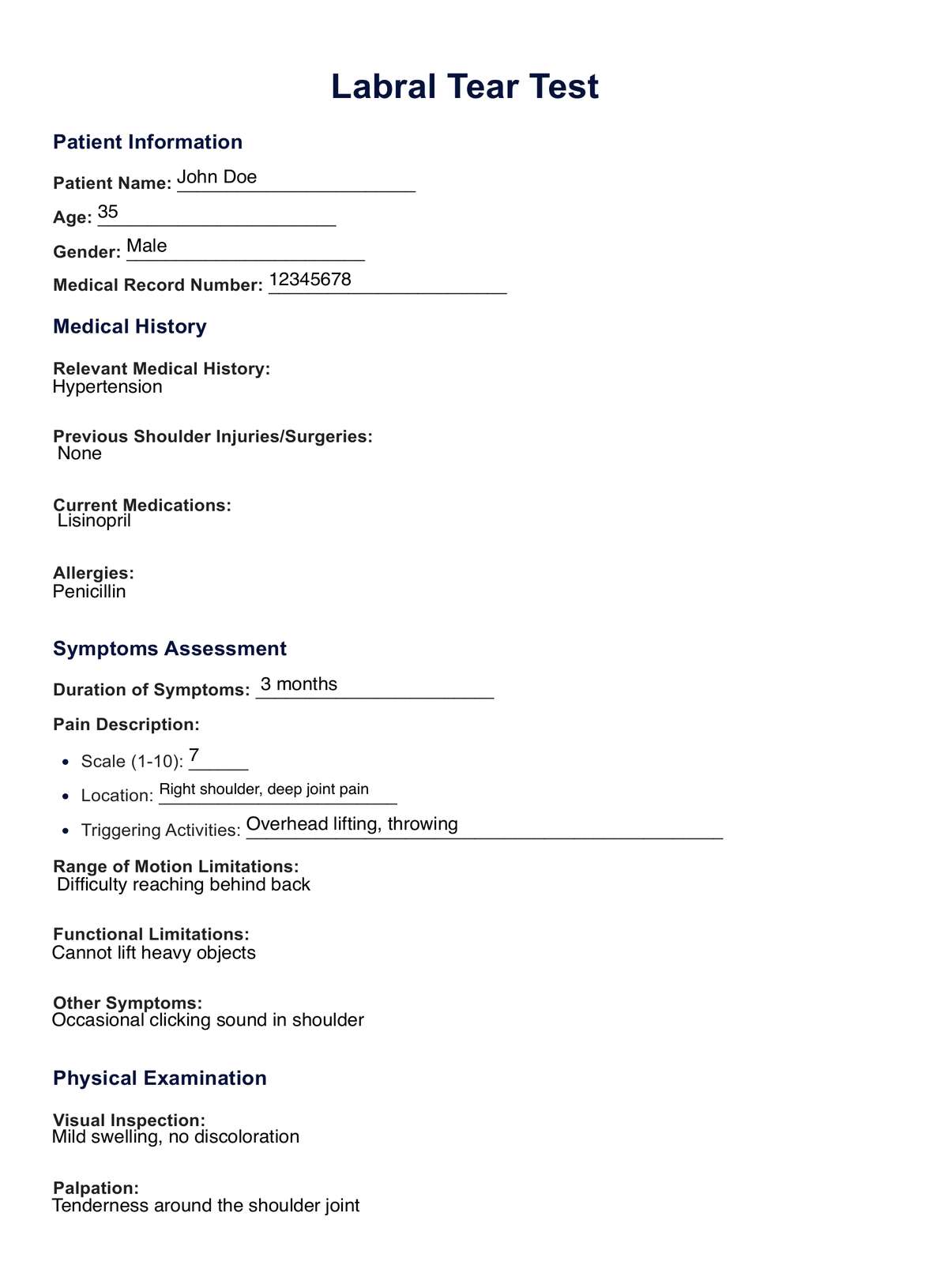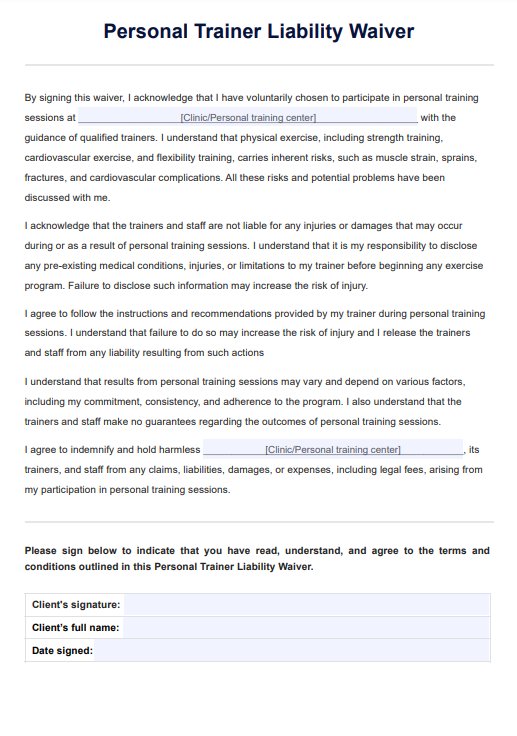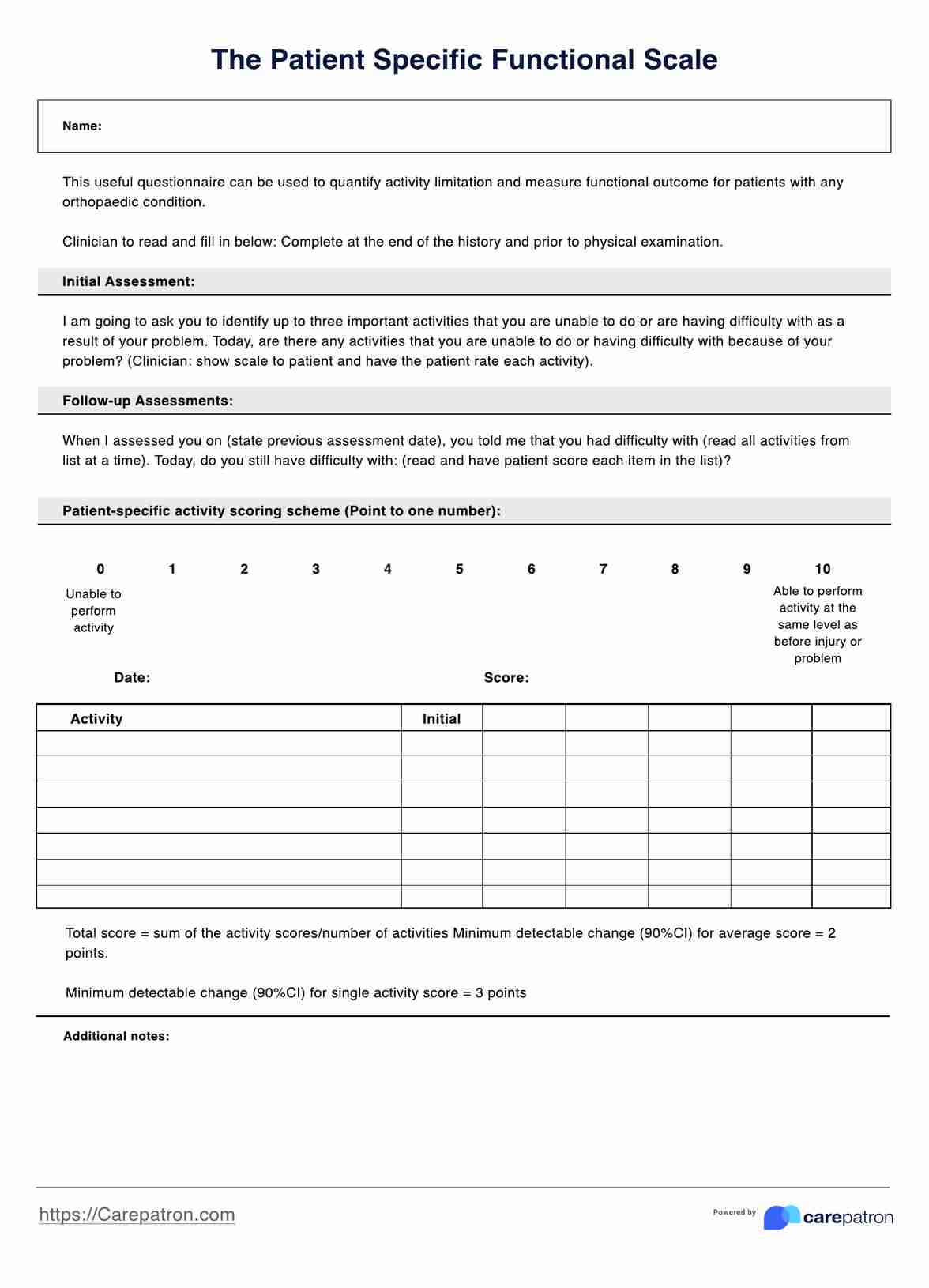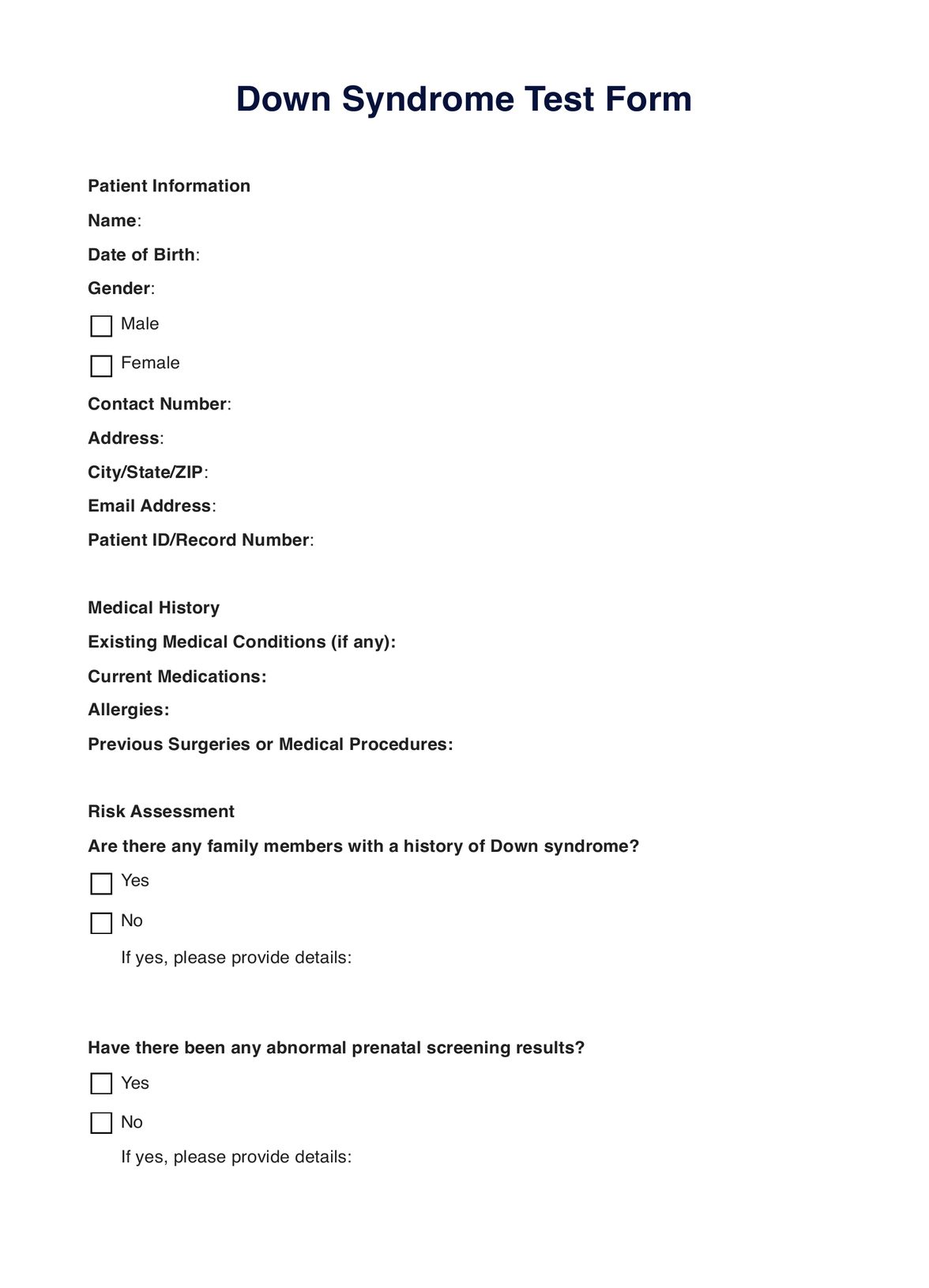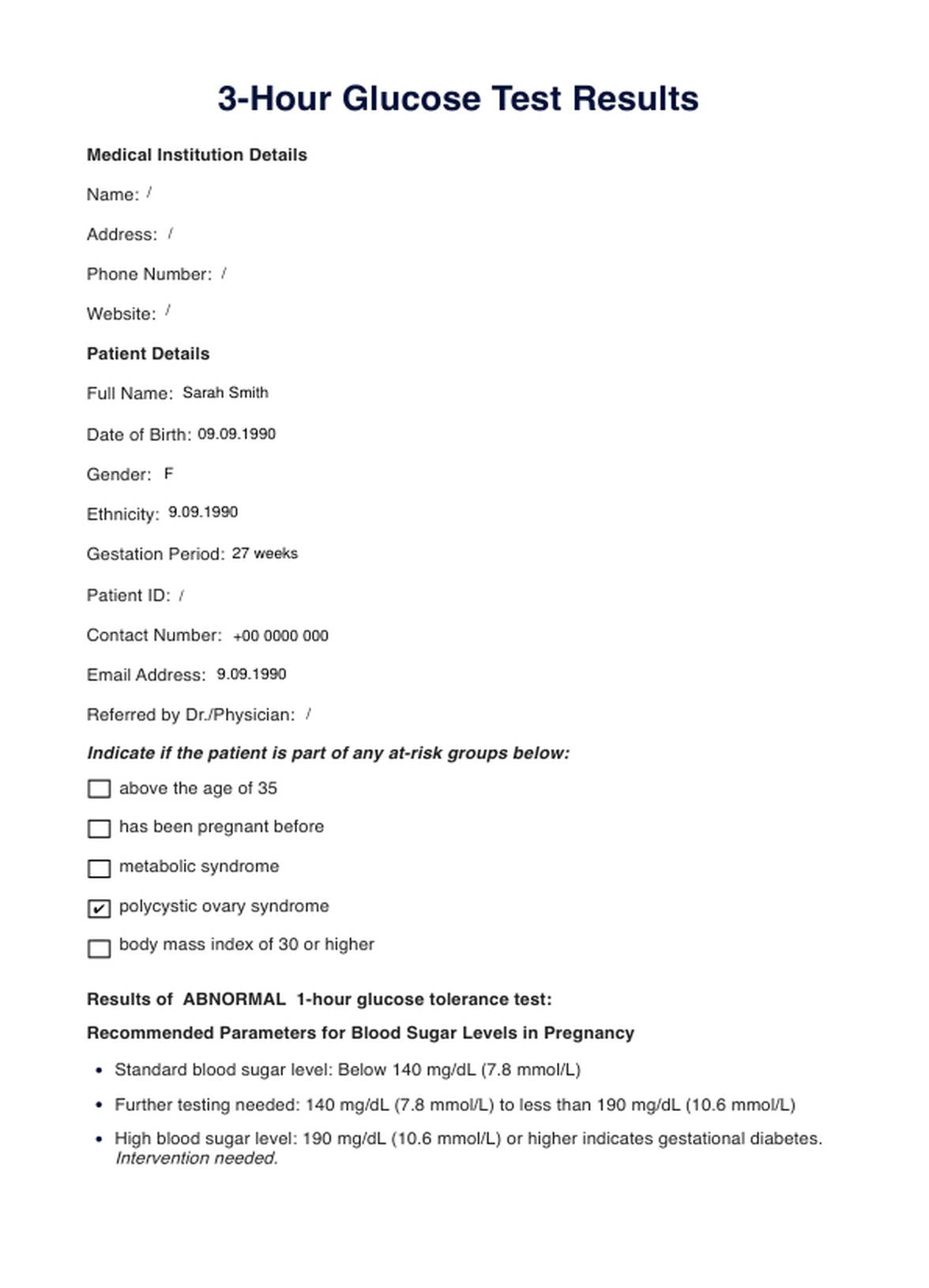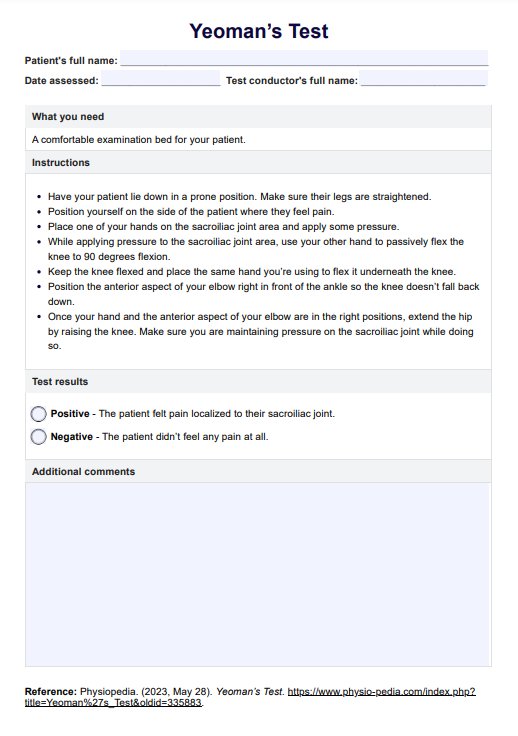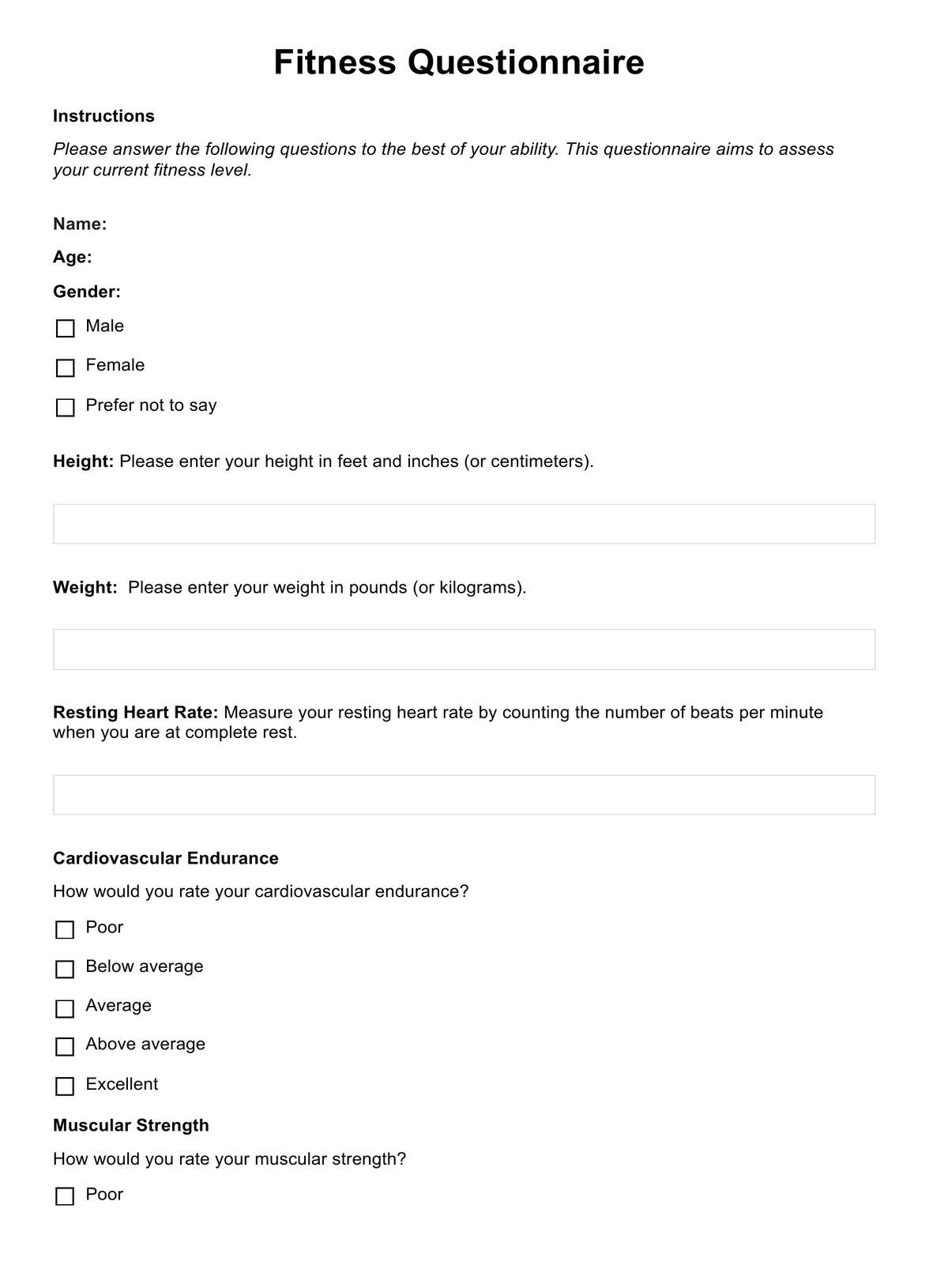Shoulder Labral Tear Test
Explore the diagnosis of shoulder labral tears with tests like the Active Compression Test. Learn symptoms, treatment, and care for effective recover.


What is a Labral tear?
A labral tear refers to an injury of the labrum, a type of cartilage found in the shoulder joint. The labrum is a ring of cartilage that surrounds the socket of the shoulder joint, helping to stabilize the joint and hold the ball of the upper arm bone (humerus) in place. This structure is crucial for maintaining the strength, stability, and smooth movement of the shoulder.
Labral tears can occur for a variety of reasons, including:
- Trauma: Sudden, acute injuries such as falling on an outstretched arm or a direct blow to the shoulder can cause labral tears.
- Repetitive motion: Athletes or individuals who engage in activities involving repetitive overhead motions (like baseball pitchers, swimmers, or weightlifters) are at a higher risk of developing labral tears due to the continuous stress on the shoulder joint.
- Aging and wear: As people age, the labrum can wear down and tear. This is more common in older adults and is often part of the general wear and tear of the joint.
- Dislocation: Shoulder dislocations can also lead to labral tears, particularly in younger patients.
Symptoms of a labral tear can vary, but often include:
- Pain, especially with overhead activities or movements.
- A sense of instability in the shoulder.
- Decreased range of motion.
- A catching, locking, popping, or grinding sensation in the shoulder.
- Weakness in the shoulder.
Treatment for a labral tear depends on the severity and location of the tear, as well as the patient's age, health status, and activity level. It may range from rest and physical therapy to manage symptoms, to surgical repair in more severe cases.
Shoulder Labral Tear Test Template
Shoulder Labral Tear Test Example
Understanding shoulder pain: symptoms of a labral tear?
Shoulder pain from a labral tear can present with various symptoms, and the severity and nature of these symptoms can vary depending on the extent and location of the tear. Here are some common signs and symptoms associated with a labral tear in the shoulder:
- Pain: The most common symptom is a sharp, often deep-seated pain in the shoulder. This pain can be exacerbated by certain movements, especially overhead activities, throwing, or lifting.
- Catching or locking sensation: Some people with a labral tear experience a catching or locking sensation in the shoulder when they move their arm.
- Popping or clicking: You may hear or feel a popping or clicking sound in the shoulder during movement.
- Instability: The shoulder may feel loose, as if it might pop out of place or dislocate. This feeling of instability can be more pronounced during certain activities.
- Decreased range of motion: There may be a reduction in the range of motion of the shoulder, making it difficult to perform certain movements.
- Weakness: The shoulder may feel weak, making it hard to perform usual activities, especially those requiring lifting or overhead motion.
- Pain at night: Discomfort or pain from a labral tear can often be more noticeable at night, particularly when lying on the affected shoulder.
- Loss of strength: In some cases, there might be a noticeable decrease in the strength of the shoulder or arm.
It's important to note that symptoms of a labral tear can overlap with other shoulder problems, such as rotator cuff injuries, biceps tendonitis, or shoulder impingement. Therefore, a proper diagnosis by a healthcare professional, often involving a physical exam and imaging tests, is crucial for effective treatment. Treatment options can range from conservative methods like physical therapy and rest to surgical interventions in more severe cases.
How does this test work?
When it comes to diagnosing a shoulder labral tear, several specific tests are used by healthcare professionals to assess the condition. These tests are designed to provoke symptoms of a labral tear, helping to confirm the diagnosis. Here are some of the key tests commonly used:
- O'Brien's test (active compression test): This test is performed by having the patient stand and hold their arm straight out in front of them at shoulder level, with the elbow extended. The arm is then adducted (moved across the body) and internally rotated (thumb pointing down). The examiner applies downward pressure on the arm. The test is then repeated with the palm facing upwards. Pain or a painful click during the first position but not the second often indicates a labral tear, particularly a SLAP lesion.
- Anterior slide test: The patient stands with their hands on their hips, thumbs pointing backwards. The examiner places one hand on the elbow and the other on the front of the shoulder. The shoulder is then pushed forward (anteriorly) while the elbow is pushed back (posteriorly). Pain or a pop in the shoulder during this maneuver can suggest a labral tear.
- Crank test: The patient's arm is elevated to 160 degrees and then the examiner applies an axial load (downward pressure) while rotating the arm internally and externally. Pain or clicking during this test can indicate a labral tear.
- Speed's test: This test is primarily for detecting biceps tendon pathology, but since the biceps tendon attaches to the labrum, it can sometimes help diagnose a labral tear. The patient extends their arm in front of them, palm up, and then tries to elevate the arm against resistance. Pain in the bicep region can indicate a labral tear.
- Biceps load test: This test is specifically designed for diagnosing SLAP lesions. The patient lies on their back, and the arm is elevated and externally rotated. The patient then flexes the biceps against resistance. Pain with this maneuver can indicate a SLAP lesion.
It's important to note that while these tests can be indicative of a labral tear, they are not definitive on their own. Diagnostic accuracy often requires a combination of these physical tests, patient history, and imaging studies like an MRI or an arthroscopic evaluation by an orthopedic surgeon. Imaging particularly helps in visualizing the labrum and other structures within the shoulder for a more accurate diagnosis.
Interpreting the results
Interpreting the results of a labral tear test involves a comprehensive evaluation of the patient's symptoms, physical examination findings, and diagnostic imaging results. Here's a breakdown of how to interpret these aspects:
1. Symptoms assessment
- Pain and duration: Chronic pain, especially during overhead activities or movements, may indicate a labral tear.
- Functional limitations: Difficulty in performing specific movements can suggest the area of the tear.
- Other symptoms: Clicking, locking, or a sense of instability in the shoulder are common in labral tears.
2. Physical examination
- Special tests:
- O'Brien's test: A positive result, indicated by pain or a 'click' during the test, can suggest a labral tear, particularly a SLAP (Superior Labrum from Anterior to Posterior) lesion.
- Biceps load test II: Pain during this test, while the shoulder is in a specific position, also suggests a SLAP lesion.
- Anterior slide test: A positive test indicates an anterior labral tear.
- Range of motion: Limitations in certain movements can provide clues about the tear's location.
3. Imaging and Diagnostic Tests
- X-Ray: Typically normal in labral tears but useful to rule out bone-related issues.
- MRI: High sensitivity in showing labral tears. Specific patterns on MRI can indicate the type and severity of the tear.
- Arthroscopy: Considered the gold standard for diagnosing labral tears. Direct visualization of the labrum allows for a definitive diagnosis.
4. Diagnosis
Based on the combination of symptoms, physical exam findings, and imaging results, a diagnosis is made:
- Type of labral tear: Identifying whether it's a SLAP tear, anterior or posterior tear, etc.
- Severity: Grading the tear helps in planning the treatment.
5. Treatment plan
- Conservative management: Physical therapy and medications are often first-line for mild to moderate tears.
- Surgical options: Considered for severe tears or those not responding to conservative treatment.
Key points in interpretation:
- A holistic approach is crucial. Relying on just one aspect (like imaging) may not provide an accurate diagnosis.
- Patient history and symptomatology are as important as diagnostic tests.
- The specific type and location of the tear determined through examination and imaging guide the treatment plan.
- It's important to differentiate between labral tears and other shoulder pathologies like rotator cuff injuries, as treatment and prognosis may differ.
Understanding these elements will help in accurately interpreting the results of a labral tear test, leading to an effective treatment plan and better patient outcomes.
Next steps for improving shoulder pain
Improving shoulder pain, especially when it's related to conditions like labral tears, requires a comprehensive approach that includes medical treatment, physical therapy, lifestyle modifications, and possibly surgical intervention. Here are the next steps that can be taken:
1. Medical management
- Pain relief medication: Over-the-counter pain relievers such as ibuprofen or acetaminophen can be used to manage pain and inflammation.
- Prescription medication: In some cases, stronger pain relief or anti-inflammatory medications may be prescribed by a doctor.
- Corticosteroid injections: These can provide temporary relief from pain and inflammation in the shoulder.
2. Physical therapy
- Strengthening exercises: Focus on exercises that strengthen the muscles around the shoulder joint, improving stability.
- Range of motion exercises: These exercises help maintain and improve shoulder mobility.
- Posture correction: Proper posture can reduce stress on the shoulder joint.
- Modalities: Physical therapists may use ultrasound, heat/cold therapy, or electrical stimulation to manage pain and inflammation.
3. Lifestyle modifications
- Activity modification: Avoid activities that exacerbate the pain, like heavy lifting or repetitive overhead movements.
- Ergonomics: Adjust your workspace to reduce strain on your shoulder. For example, ensure that your computer screen is at eye level and your chair supports your back.
- Rest: Ensure adequate rest for the shoulder to recover.
- Nutrition: A healthy diet rich in anti-inflammatory foods can support healing.
4. Surgical intervention
- Arthroscopic surgery: For severe labral tears or those not responding to conservative treatment, surgery may be recommended. This is often a minimally invasive procedure to repair the tear.
- Post-surgery rehabilitation: Post-operative physical therapy is crucial for regaining strength and range of motion in the shoulder.
5. Regular follow-up and monitoring
- Doctor visits: Regular check-ups with your doctor to monitor your progress.
- Adjustments in treatment plan: Based on your recovery, your doctor might adjust your treatment plan.
6. Alternative therapies
- Acupuncture: Some find relief from shoulder pain with acupuncture.
- Massage therapy: Can help in relieving muscle tension around the shoulder.
7. Patient education
- Understanding the condition: Being informed about your condition and the healing process can help in better management.
- Self-care techniques: Learning proper techniques for shoulder exercises and daily activities.
Important considerations
- Patience and consistency: Recovery from shoulder pain, especially due to labral tears, can take time. Consistency in following the treatment plan is key.
- Communication with healthcare providers: Keep open communication with your healthcare providers about your pain levels, progress, and any concerns you have.
By following these steps and working closely with healthcare professionals, you can effectively manage and improve shoulder pain. Remember, each person's recovery journey is unique, so it's important to tailor these steps to your specific needs and medical advice.
Other useful shoulder assessments
In addition to the labral tear assessments, there are several other useful shoulder assessments that can aid in diagnosing and managing shoulder conditions. Here's an overview of some of these assessments, with relevant links for detailed information:
- Shoulder subluxation tests: These tests help in diagnosing shoulder instability, where the shoulder joint is partially dislocated. More information and templates can be found at Shoulder Subluxation Tests.
- Shoulder abduction test: This test assesses the strength and integrity of the supraspinatus muscle, which is part of the rotator cuff. It can help identify rotator cuff injuries. Detailed templates are available at Shoulder Abduction Test.
- Shoulder pain and disability index (SPADI): The SPADI is a tool used to measure the pain and disability associated with shoulder conditions. It can be very useful in both diagnosing and monitoring the progress of treatment. More details can be found at Shoulder Pain and Disability Index.
- Belly press test for shoulder: This test helps in diagnosing subscapularis muscle injuries, which is another component of the rotator cuff. It's a simple test that can be performed in a clinical setting. For more information, visit Belly Press Test for Shoulder.
- Comprehensive shoulder exam: A thorough shoulder examination encompasses various tests to evaluate the different aspects of shoulder integrity, including strength, range of motion, and pain. A complete guide is available at Shoulder Exam.
- Shoulder pain diagnosis chart: This chart is a useful tool for clinicians to narrow down the possible causes of shoulder pain based on specific symptoms and test findings. You can access it at Shoulder Pain Diagnosis Chart.
These assessments are crucial for a comprehensive evaluation of shoulder conditions. They help in diagnosing the specific nature of shoulder pathologies, guiding the appropriate treatment and management strategies. Remember, an accurate diagnosis is key to effective treatment, so these tools should be used as part of a holistic approach to patient care.
Commonly asked questions
A shoulder labrum tear involves injury to the cartilage (labrum) around the shoulder socket, often causing symptoms like deep pain, instability, and a catching sensation in the joint. Diagnosis typically starts with a physical examination, where tests like the Active Compression Test or other tests are used to detect discomfort or clicking sounds indicative of a torn labrum. Orthopedic surgeons may also employ imaging techniques such as shoulder arthroscopy or MRI to visualize the labrum and surrounding structures for a definitive diagnosis.
SLAP lesions (Superior Labrum Anterior and Posterior) are a specific type of labral tear that occur at the point where the biceps tendon, or the long head of the biceps, attaches to the superior labrum of the shoulder. They are characterized by pain, a popping sensation, and difficulty with certain movements like horizontal adduction. These lesions are a common form of shoulder labrum tears, especially in athletes or individuals engaging in repetitive overhead motions.
Treatment for a torn labrum in the shoulder varies depending on the severity of the tear and the patient's activity level. Non-surgical options may include a rehabilitation program focusing on strengthening and stabilizing the shoulder, often guided by sports medicine specialists. For more severe tears, particularly those involving significant superior labral lesions, arthroscopic surgery might be required. Post-surgery, patients usually undergo a rehabilitation program to regain healthy shoulder function.


